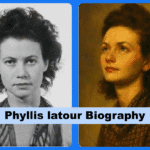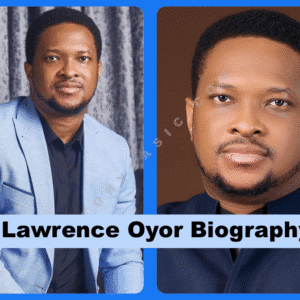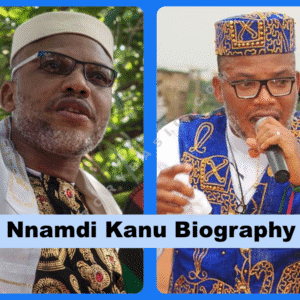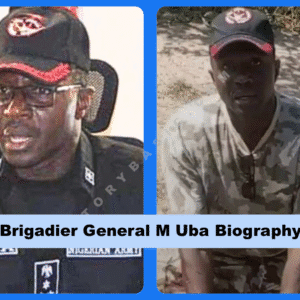Gregory Bovino biography — learn about the U.S. Border Patrol senior official, his career progression, key operations, controversies and leadership impact.
- Key Highlights of Gregory Bovino Biography
- Early Life and Background
- Education and Academic Journey
- Career Journey and Major Achievements
- Early Career
- Senior Leadership Roles
- High-Profile Operations
- Personal Life and Relationships
- Contributions to Society / Legacy
- Controversies and Challenges
- Net Worth and Financial Overview
- Influence, Impact, and Legacy
- Interesting Facts and Lesser-Known Details
- Conclusion
- FAQs about Gregory Bovino Biography
Gregory Bovino is a senior American law-enforcement figure known for his leadership roles within the U.S. Border Patrol and U.S. Customs and Border Protection (CBP). Over a career spanning nearly three decades, Bovino rose from field agent to sector chief, presiding over major border-security operations, while becoming a frequently-publicized figure in national immigration enforcement debates. I first read about the Gregory Bovino biography when media coverage highlighted his role in large-scale immigration raids and his testimony before the U.S. Congress. It struck me that his story embodies both the complex demands of modern border enforcement and the scrutiny that comes when enforcement intersects public policy and civil-rights concerns.
Key Highlights of Gregory Bovino Biography
| Category | Details |
|---|---|
| Full Name | Gregory Kent Bovino |
| Date of Birth | March 27, 1970 |
| Place of Birth | San Bernardino County, California, USA |
| Nationality | American |
| Education | B.A. from Western Carolina University; M.A. from Appalachian State University |
| Occupations | U.S. Border Patrol Agent & Senior Official |
| Known For | Leadership in major border-security sectors (New Orleans, El Centro) |
| Notable Operations | Los Angeles and Chicago immigration enforcement campaigns |
| Controversies | Allegations of mis‐conduct and forced reassignment after Congressional testimony |
| Legacy Focus | Influence on U.S. border enforcement policy and public debate over immigration tactics |
Early Life and Background
Gregory Kent Bovino was born on March 27, 1970, in San Bernardino County, California. Growing up in southern California during years of significant immigration-related policy shifts, Bovino witnessed firsthand the evolving dynamics of border enforcement and migration in the western United States. While public records of his early family life are limited, his choice of career reflects a deep engagement with national-security and law-enforcement themes from an early age. In that sense, the Gregory Bovino biography is rooted in a generation of agents who entered the field during the acceleration of border policy debates in the 1990s.
Education and Academic Journey
Bovino pursued higher education with a focus on leadership, public administration and national security. He earned his bachelor’s degree from Western Carolina University and later obtained a master’s degree from Appalachian State University. These credentials, combined with participation in senior executive development programs, prepared him for progressively senior roles in the U.S. Border Patrol. In his own accounts, he emphasizes the importance of both formal education and field-experience in shaping an operationally effective and policy-aware border-security official.
Career Journey and Major Achievements
Early Career
In 1996, Bovino joined the U.S. Border Patrol, gaining experience in field operations that would form his foundation for later leadership. Assignments in sectors such as El Paso and Yuma exposed him to both desert-terrain challenges and complex migrant-flow dynamics.
Senior Leadership Roles
By the late 2000s, Bovino had advanced into leadership posts. He served as assistant chief in the Yuma sector and later as patrol agent in charge at the Blythe station in California. These roles broadened his management scope and operational responsibilities.
In approximately 2018, Bovino was appointed Chief Patrol Agent of the New Orleans sector—overseeing vast coastal and inland jurisdictions and coordinating with multiple law-enforcement partners. This was followed by his elevation to Chief of the El Centro sector in California, one of the most active frontier zones for U.S. border enforcement.
High-Profile Operations
In his senior roles, Bovino spearheaded operations that drew national attention. For example, in Los Angeles and later in Chicago, he became the visible face of large immigration-enforcement campaigns. These included challenges such as undocumented-migrant detentions, cooperation with local jurisdictions, and use-of-force questions. In particular, during “Operation Midway Blitz” in Chicago, Bovino supervised a broad enforcement initiative that sparked debate over procedures, civil-rights oversight and tactics.
Personal Life and Relationships
While Bovino’s public persona centers on his professional duties, his biography also reflects the personal pressures and transitions typical of high-stakes law enforcement. He has been nearing the mandatory retirement age for Border Patrol agents and has publicly stated plans to return to his home state and engage in private-sector or community activities post-service. This personal dimension—balancing operational duty with family and life after enforcement service—adds a humanizing layer to the otherwise high-intensity portrait in the Gregory Bovino biography.
Contributions to Society / Legacy
Bovino’s legacy lies in his influence over U.S. border-security operations and his role in public-policy debates. His management decisions and public statements have shaped how immigration enforcement is portrayed in media, how federal agencies coordinate with local jurisdictions, and how law-enforcement accountability is discussed. His career underscores that modern border agents must not only patrol terrain but also navigate legal, political and community-relations complexities.
From a positive angle, Bovino is credited with professionalizing certain operations, emphasizing training, inter-agency cooperation and strategic planning. On the flip side, his tenure also raised enduring questions about oversight, use of force, transparency and the boundaries of federal enforcement in domestic jurisdictions. For those studying border enforcement, his biography serves as a case-study of leadership under pressure and the evolving nature of national-security operations on U.S. soil.
Controversies and Challenges
Bovino’s career has not been without controversy. In July 2023, after voluntarily participating in an interview before Congressional committees, Bovino was reportedly relieved of his command of the El Centro sector and reassigned to a less defined headquarters role—a move identified by some oversight committees as potential retaliation. He became the subject of congressional scrutiny regarding internal agency practices and whistleblower protections.
In signing off public statements, Bovino defended enforcement tactics, but his tone and approach attracted criticism from civil-rights groups and local officials. For example, while leading enforcement in Chicago, his statements about agent tactics and arrest patterns led to lawsuits and federal court orders restricting non-lethal crowd-control tools during immigration operations. These events illustrate the complex interplay of operational mandate, public scrutiny and legal accountability.
Net Worth and Financial Overview
Public service customs like Bovino’s rarely allow for large personal wealth accumulation compared to private-sector roles, and no reliable public estimation of his net worth is widely available. Salaries for senior U.S. Border Patrol officials generally fall within the federal pay-scale for senior executives, though specific numbers depend on grade and locality. The Gregory Bovino biography thus emphasizes professional influence rather than financial accumulation.
Influence, Impact, and Legacy
Bovino’s journey from field agent to senior sector chief reflects institutional pathways in U.S. border enforcement. His methods and public-facing roles have influenced how the Border Patrol and CBP approach media, policy discussion and enforcement operations. For law-enforcement professionals and policy students, his career is instructive in these ways:
- Leadership under complexity – managing diverse environments, from desert terrain to urban-immigration challenges.
- Operational transparency – navigating public scrutiny while executing federal mandates.
- Policy effects – illustrating how enforcement officers become symbols in broader immigration debates.
- Legacy through doctrine – shaping training, sector management and national-border strategies.
From my perspective, the Gregory Bovino biography demonstrates that enforcement leadership today requires far more than tactical skill—it demands public-relations aptitude, policy-savvy and ethical reflection.
Interesting Facts and Lesser-Known Details
- Bovino once led an exercise where agents and journalists swam across the All-American Canal to illustrate migrant-hazard terrain—part of a public-outreach effort to highlight operational risk.
- His social-media presence and imagery (including an online profile photo with an assault rifle) became a focal point of controversy, tying operational messaging to public perception.
- His planned return to North Carolina and a post-service career reportedly focused on community engagement reflects the transition many senior agents face when leaving federal roles.
Conclusion
The Gregory Bovino biography is more than a recount of a law-enforcement career—it is an examination of how one individual navigated the evolving frontlines of U.S. immigration policy, enforcement operations and public accountability. His impact lies not only in arrests or border metrics but in how his roles became entwined with national debates over sovereignty, human rights and agency transparency.
What makes Bovino’s story remarkable isn’t merely the positions he held, but how his tenure became a microcosm of modern border enforcement—where tactics meet legal norms, where authority meets oversight, and where individual leadership meets institutional legacy.
FAQs about Gregory Bovino Biography
1. Who is Gregory Bovino?
Gregory Bovino is a senior U.S. Border Patrol official who has served as Chief Patrol Agent in major sectors including El Centro and New Orleans.
2. What major roles has Gregory Bovino held?
He has held leadership positions in the U.S. Border Patrol since the late 1990s, culminating in sector-chief roles and operational command of large enforcement campaigns.
3. What controversies has Gregory Bovino faced?
His career has included scrutiny over his reassignment after Congressional testimony, questions about use-of-force tactics in Chicago campaigns, and social-media-related public-relations issues.
4. What is his educational background?
He holds a bachelor’s degree from Western Carolina University and a master’s degree from Appalachian State University, among other senior-executive training credentials.
5. What is Gregory Bovino’s legacy in border enforcement?
His legacy lies in shaping operational leadership, reinforcing the link between field tactics and policy discourse, and serving as a focal point of accountability in modern immigration-enforcement debates.



 Worth & Legacy" loading="lazy" width="180" height="120">
Worth & Legacy" loading="lazy" width="180" height="120">









